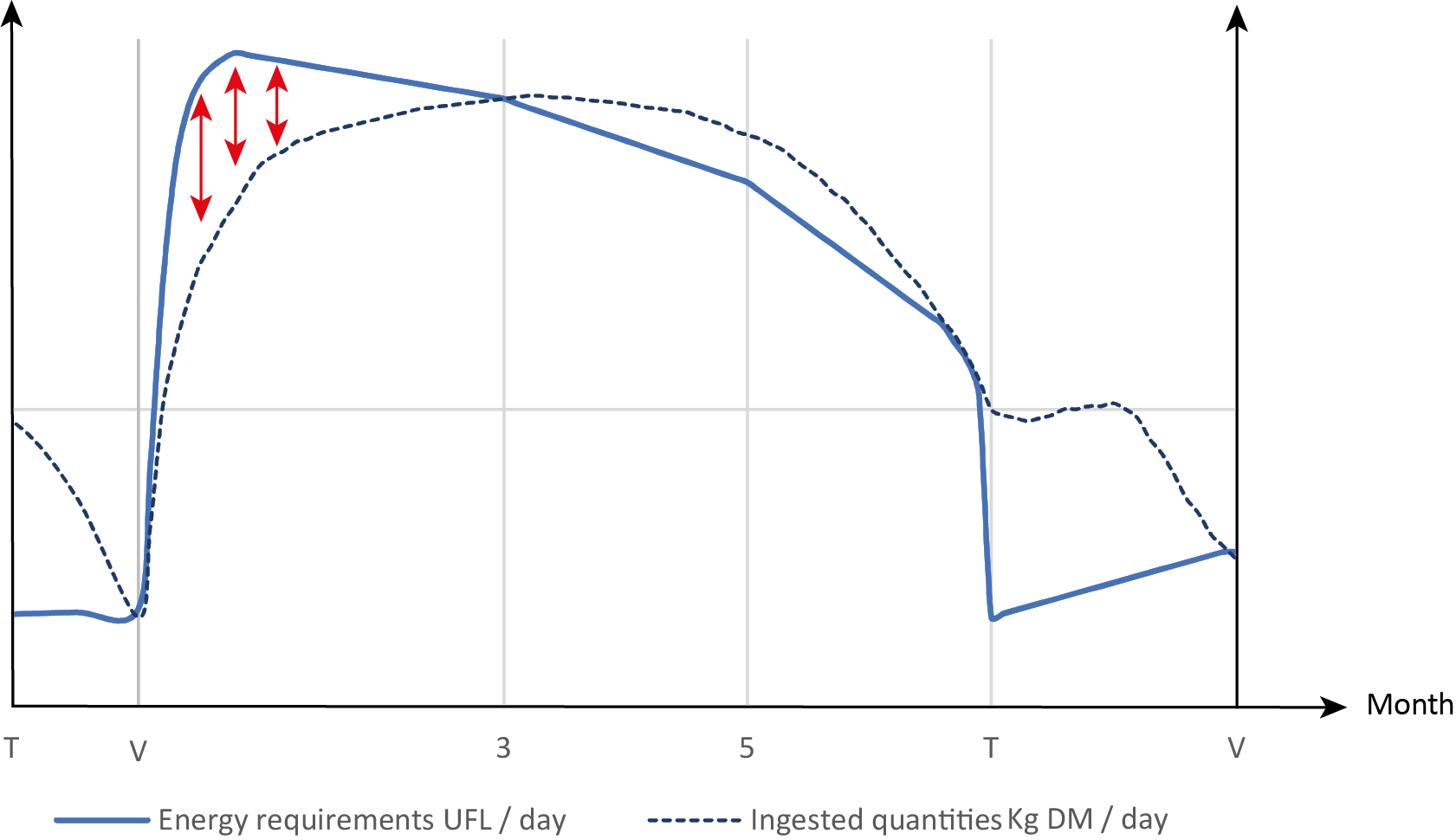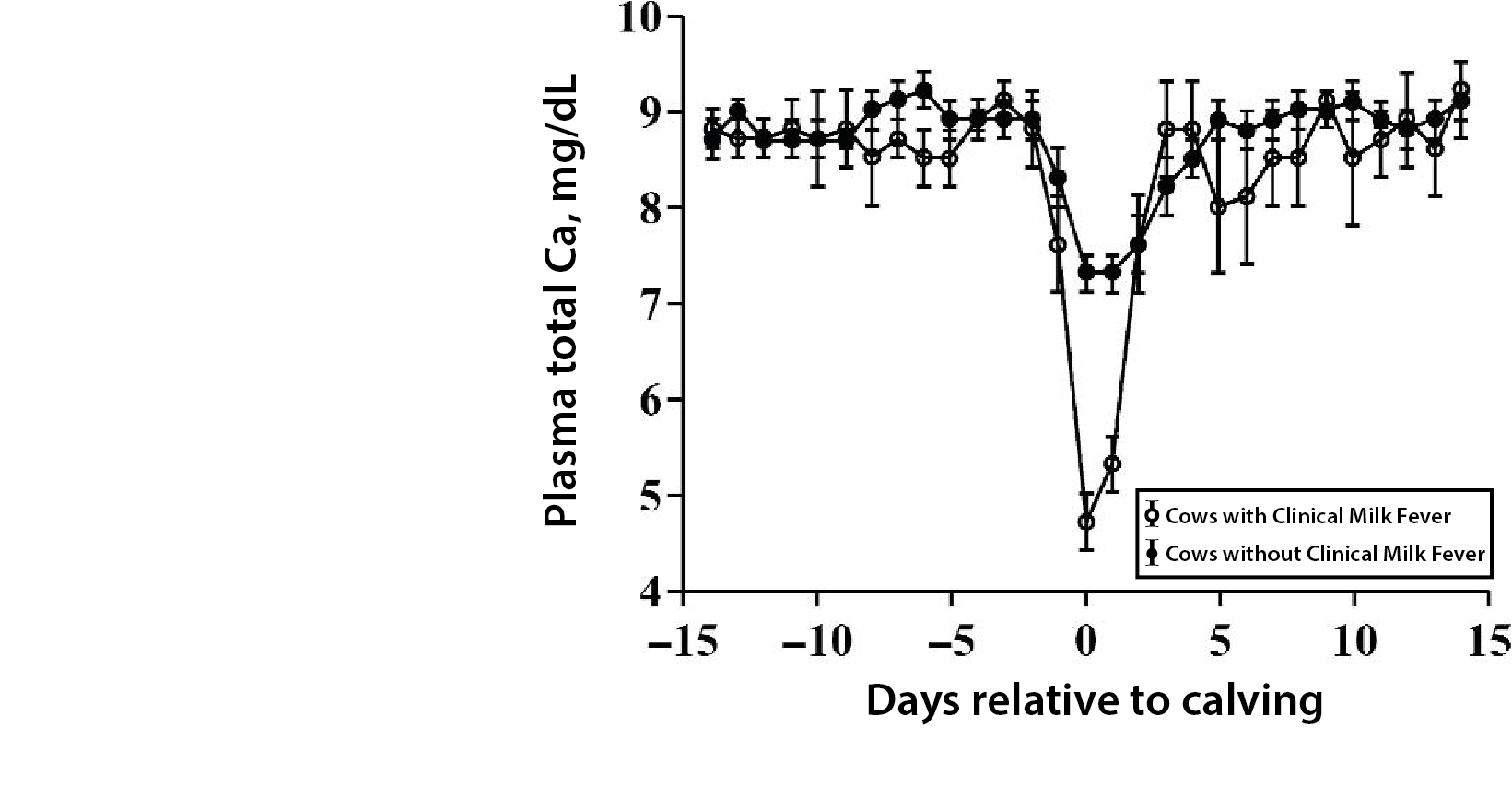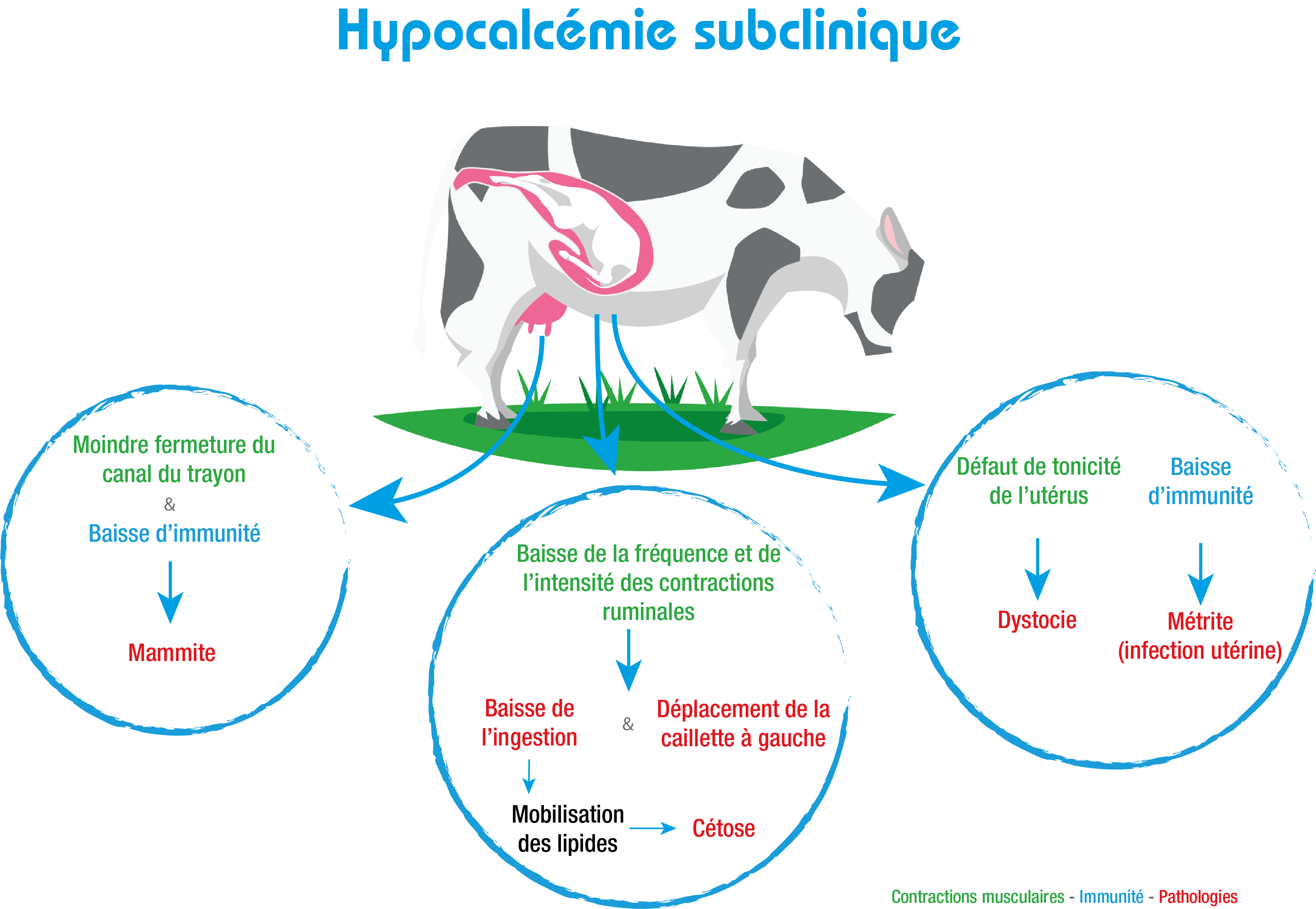What is the milk fever (or hypocalcemia) ?
Close to calving, the cow intake highly decreases and the foetus takes up considerably more space compared to the rumen. Simultaneously, her needs in energy and minerals increase significantly (see graph below). The management of this critical period is crucial: it will ensure the cow’s health and her production.

One of the main metabolic disorders of the peripartum is hypocalcemia. It is defined as a decrease of the calcium concentration in the blood (see graph below). Indeed, the needs in calcium will drastically increase during the production of the colostrum (DeGaris, Lean, 2018). This major mobilisation of calcium will continue until the lactation pic at which almost 50g of calcium per day will be exported or eliminated (SALAT 2005; Goof, 2014). According to Martín-Tereso et Martens (2014), there is almost one kilogram of calcium that is mobilised at the beginning of the lactation, most of it is coming from the skeleton of the animal.

What are the different forms of milk fever (hypocalcemia) ?
Two types of milk fever are taking place:
- Clinical form (also called “milk fever”), the best known and the most feared by farmers. It is due to a decrease of the calcemia (<50 mg/L) following the first days after calving. The clinical signs are easily recognisable (abnormalities in locomotion, lying cow…).
- Subclinical form which is also due to a decrease of calcemia following the first days after calving. This time it goes from 55 to 85 mg/L depending on scientific studies. There are no visible clinical signs but it has negative consequences on farms productivity.
While milk fever is rare in French herds (about 8% according to Meschy (2010)), an American study (Reinhardt et al. 2011) and a French study (Gillet and Millemann, 2014) have schown that subclinical hypocalcemia affects one fourth of the primiparous and half of the multiparous (see tables enclosed). As the prevalence [1] of the latest is higher, its economic impact is more important than milk fever.


[1] Number of sampled cases in a population, at a precise moment, independently from the age of the disease.
What are the consequences of subclinical milk fever (hypocalcemia) ?
Within the organism the calcium has an effect, inter alia, on the immunity (functioning if the neutrophils) and on the muscular contractions. Therefore, the subclinical hypocalcemia leads to numerous complications shown below:

Adapted from Dr Belbis, Roadshow hypocalcémie Vétalis 2017
Even though they are not directly related to subclinical hypocalcemia by farmers, these consequences have a significant economic impact for the farm. Indeed, they affect animal health (veterinarian costs are incurred) and, in certain cases, on her milk production (about 14% of the costs of the disorder according to Weaver et al. (2016)). In the words of Oetzel (2013), each cow with subclinical hypocalcemia costs about 110€, versus 262€ for a milk fever. However, considering its higher prevalence on farms, Oetzel (2013) calculated that subclinical hypocalcemia would cost four times more per year than milk fever.
How to diagnose milk fever (hypocalcemia) ?
Il est possible de mesurer la calcémie d’un animal via des analyses de sang. Cependant, il existe plusieurs inconvénients :
- Le diagnostic est fiable à condition d’être effectué lors de la courte période à risque, c’est-à-dire dans les 48h après vêlage
- La valeur seuil du calcium sanguin varie de 55 mg/L à 85 mg/L selon les études
- Les analyses nécessitent un analyseur spécifique d’où leur coût élevé
Pour ces différentes raisons, il semble plus judicieux de chercher à maîtriser la calcémie de ses animaux en jouant la carte de la prévention plutôt que d’essayer de diagnostiquer une hypocalcémie subclinique.
Practical management of milk fever (hypocalcemia)
The control of hypocalcemia around calving comes with feeding during the dry period:
- Maximise the intake (12 to 14kg of Dry Matter Intake (DMI), enough space at the fence, etc.)
- Supply enough calcium
- Dry cows with standard ration: 5g of Ca/kg of DMI (60g/j)
- Dry cows with an acidification of the ration (pH< 0): 10g to 16g of Ca/kg of DMI (120 to 180g/j)
- Ensure good feed transitions
- Have animals with a body condition scoring between 3,0 and 3,5
- Ensure a sufficient supply in minerals including trace elements
Of course, environmental factors have also to be controlled during the dry period such as environmental health, comfort, social interactions, etc. to limit development of diseases around calving.
In order to support these needs in calcium, complementary solutions to feed management named below exists:
- To prevent from clinical hypocalcemia, an exogenous supplementation in calcium via boluses is sometimes necessary.
- To prevent from subclinical hypocalcemia, an innovative solution made from calcium pidolate has been developed. The innovative technology of these boluses enhances the calcium gut absorption and contributes to the mobilisation of the calcium from the bones of the cow.
Your veterinarian will help you find the most appropriate solution for your herd.
 Contact
Contact Export
Export